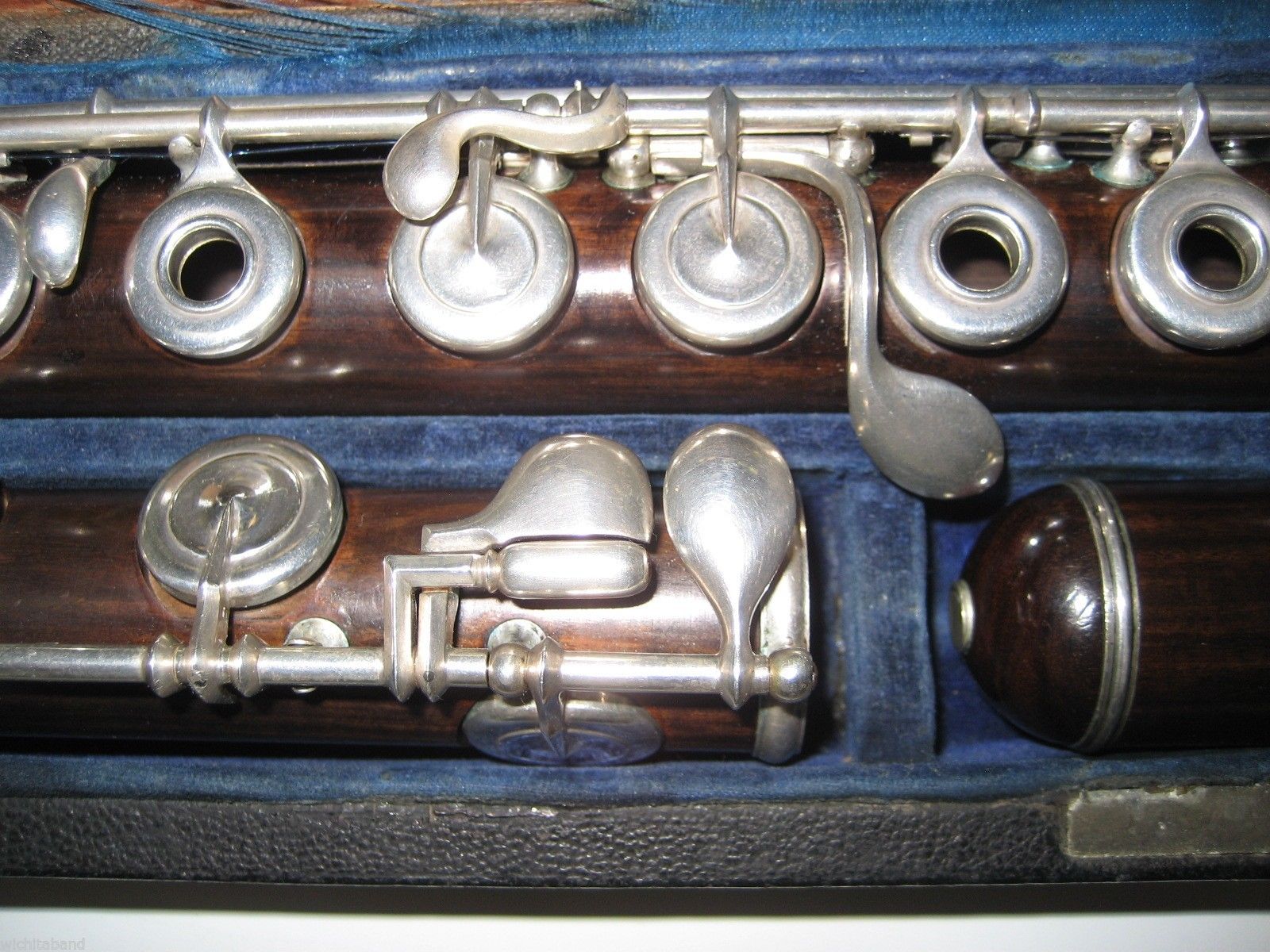RARE FLUTES INDEED!
Having been employed by a small musical instrument emporium since 1961, I’ve seen thousands of flutes. Our workshop employs a handful of dedicated technicians and we can attest to the fact that we’ve restored several hundred “Old French” flutes and more than a thousand Boston-made instruments.
In the past decade, I’ve gradually assembled a small collection of rare flutes. Based on my personal knowledge of names, models, pitches and quality, I now offer some of these to the public. A few are recent acquisitions; some of them have been in the flute-vault for decades.
I’ve concentrated on acquiring flutes that are fully original or close to it. None of my flutes has been “re-tuned” or has had extensive alterations. My goal is to offer instruments that are original-original-original.
Here are a few of my favorites….
Gary L.Ray / Wichita Band Instrument Company / Wichita, Kansas
BOEHM, GODFROY AND LOT.
Today’s modern concert flute is the result of the work of Munich musician and inventor Theobald Boehm (1794 – 1881). Early Boehm instruments were crafted with ring keywork; in 1847 he developed a cylindrical instrument with larger tone-holes and covered keys.
Aside from minor improvements, modern concert flutes are largely the same as they were in the mid 19th. Century.
By the mid 1850’s, the partnership of Clair Godfroy (1774 – 1841) and Louis Esprit Lot (1807 – 1896) made an agreement with Boehm to produce the new model in their Paris workshop.
Lot left the firm in 1855, establishing his own establishment that same year.
Godfroy woodwinds, owned by various family members, continued until 1888.
From 1875 to 1882 the firm was owned by H. D. Villette. It passed in 1882 to Debonneet de Coutelier. The latter was the proprietor until 1889 when ownership was assumed by members of the Chambille family.
In 1951, Strassser-Marigaux purchased the firm, which resulted in the Lot name being stamped on their “SML” instruments. We do not consider the SML flutes to be of high quality.
HAYNES and POWELL.
In the States, William S. Haynes (1864 – 1939) produced his first flutes in 1888, building instruments which were based on Boehm’s originals. The company passed to his family, eventually to several of his workers. In 2004, Haynes was purchased by Eastman Music Company, an importer of musical instruments owned by Beijing native Qian Ni. Haynes today builds flutes of quality, both in Boston and overseas.
Kansas jeweler Verne Q. Powell (1879 – 1968) was employed by Haynes between 1913 and 1926. The first “hand-made” Haynes instruments were introduced during his tenure. From the early twenties until 2004, Haynes built both “commercial” models (extruded tone-holes, flat keys with “y-arm” construction) and “hand-made” flutes (soldered tone-holes, key arms extended over pad-cups). The “commercials” were based on the Munich instruments of Boehm; the “handmades” were close copies of pre-1900 flutes from the Lot workshop.
Powell’s small workshop was purchased in 1986 by Steven A. Wasser. Today it’s owned by the French Buffet-Crampon company.
GOLDEN
AGE
IN BOSTON.
The term was initially seen by us during a visit to Yamano Music Company in Tokyo. Their simple definition was based on their opinion of Haynes and Powell flutes made between 1925 and 1985. We agree that the term makes sense. Boston-made flutes before 1920 were usually built to 435 pitch. The 1923 Haynes catalog advises the buyer that they’ve gone to 440. Better than modern flutes? You decide!
FLUTES LISTED ABOVE ARE VINTAGE AND ANTIQUES, MOST ARE FOR SALE, A FEW ARE NOT
YES, OUR SHOP ALSO SELLS MODERN INSTRUMENTS BY DIZHAO AND PEARL.
